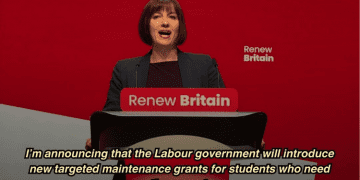Sterling surpasses 1.3700 against the dollar: Will this rally continue amid U.S. inflation pressures and U.K. recession fears?
Written by: Rania Gule, Senior Market Analyst at XS.com – MENA
The GBP/USD pair continues to post consecutive gains, reaching its highest levels since January 2022 and surpassing the 1.3700 mark during today’s Asian session. This reflects a clear shift in the short-term balance of power between the British and American economies. The notable rally in the British pound is fueled by multiple factors, including monetary policy divergences, geopolitical developments, and shifting economic expectations, creating a complex landscape that requires careful analysis to determine whether this upward move is sustainable or simply a temporary reaction to current events.
In my view, one of the main catalysts behind the pound’s ascent is the weakening U.S. dollar, driven by Jerome Powell’s cautious and somewhat conflicted remarks regarding the current economic environment, especially amid President Trump’s increasingly protectionist rhetoric. While Powell has emphasised a “wait and see” approach to interest rate cuts, he has also warned that Trump’s proposed new tariffs could lead to more persistent inflation. These mixed signals have undermined investor confidence in the stability of U.S. monetary policy and encouraged traders to seek alternative opportunities, which has, in turn, weakened demand for the dollar.
On the other hand, despite ongoing domestic challenges in the U.K., global risk sentiment has improved, particularly following a fragile ceasefire brokered by the U.S. between Israel and Iran. This development has supported risk-sensitive currencies like the British pound. In times of temporarily easing geopolitical tensions, investors tend to move away from safe havens such as the dollar and shift toward higher-yielding assets, especially when there are signs of a moderate recovery in the U.K. economy, expected to be confirmed in the upcoming GDP figures.
Nonetheless, the broader picture of the British economy still shows signs of weakness. Bank of England Governor Andrew Bailey, in his testimony before the House of Lords Economic Affairs Committee, pointed to a continued slowdown in the labour market, weakening wage growth, and rising economic inactivity. These factors could eventually force the BoE to adopt a more accommodative policy stance, potentially limiting the pound’s upward momentum. If the GDP figures disappoint expectations, especially alongside any negative surprises from Bailey’s speech at the British Chambers of Commerce conference, a sharp correction in the GBP/USD pair could follow.
In contrast, growing uncertainty over the leadership of the Federal Reserve adds another layer of volatility to U.S. markets. The prospect of Jerome Powell being replaced by figures such as Kevin Warsh or Kevin Hassett—both seen as more aligned with Trump’s economic agenda—could bring about a shift in Fed policy in the coming months. Although this is still speculative, it is enough to unsettle investors and reduce confidence in the consistency of U.S. monetary policy, thereby weakening the dollar and providing additional tailwinds for the pound.
Despite these developments, the key question remains: will this rally continue? In my opinion, the pound’s upward trajectory depends on several conditions being met. First, upcoming U.K. data—particularly GDP—must confirm real economic improvement, which would allow the BoE to refrain from cutting rates. Second, uncertainty in the U.S. must persist, whether in terms of monetary leadership or trade policy, to keep downward pressure on the dollar. Third, geopolitical calm—especially in the Middle East—must hold, as any renewed escalation could drive markets back into risk-aversion mode and boost the dollar as a haven.
At present, we could see the GBP/USD pair continue its climb toward the 1.3780 area, and possibly even 1.3850, if U.K. GDP data surprises to the upside and is accompanied by weak U.S. figures. However, if expectations are not met or the dollar regains strength due to an unexpected political or economic shift, the pair could quickly retreat toward the 1.3600 support level or lower. Traders and investors should therefore approach this rally with caution and avoid making definitive assumptions about the pair’s direction, especially in a world still fraught with political and economic turbulence.
In conclusion, I believe the pound’s rise to these multi-year highs against the dollar is not a mere coincidence or a fleeting market reaction. Rather, it reflects mounting scepticism surrounding the U.S. dollar more than any robust confidence in the U.K. economy. Still, the fragility of British fundamentals and the unpredictability of U.S. policy continue to expose the GBP/USD pair to elevated volatility, making any long-term bullish bets risky unless the underlying economic support becomes more firmly established in the weeks ahead.
Zaid Barem / ymm





 ENFIELD
ENFIELD HACKNEY
HACKNEY HARINGEY
HARINGEY ISLINGTON
ISLINGTON











